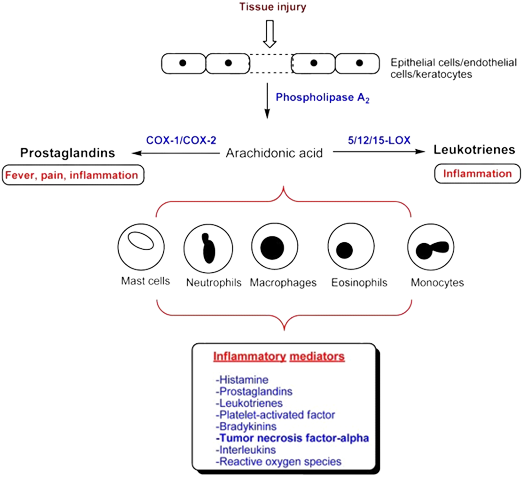When the Situation is Inflamed
The Duality of Inflammation and Measures to Reduce It
Inflammation plays a primary role in healing. We experience inflammation with an acute injury as a means by which our body defends itself. Inflammation can occur from internal or endogenous or external or exogenous mechanisms. A twisted ankle, for example, can result in visible swelling, redness, warmth, and pain. These red flags are indicators of an acute inflammatory process and thereby injury. This inflammation also plays a crucial role in healing the body from acute injury.
However, inflammation goes beyond acute becoming chronic and harmful to the body. Chronic inflammation contributes to the development of chronic disease. With the initial symptoms often experienced vaguely, such as chronic fatigue, prolonged periods of inflammation are associated with diseases such as, but not exclusive to; diabetes, cardiovascular disease, obesity, Alzheimer’,s and cancer. It is possible to screen for certain markers of inflammation in your blood. You can request this through your primary care provider.
This article explores inflammations’ positive and negative attributes. Measures to reduce the risk of inflammation contributing to chronic disease are provided. An in-depth discussion of this complex physiological inflammation pathway is beyond the scope of this article. A basic diagram is provided below as an aid.
The Biology of Inflammation

A diagram of the inflammatory pathway and its mediators
Credit Rao, Praveen & Kabir, Saad & Mohamed, Tarek. (2010). Nonsteroidal Anti-Inflammatory Drugs (NSAIDs): Progress in Small Molecule Drug Development. Pharmaceuticals. 3. 10.3390/ph3051530.
Positive Attributes
Positive Attributes
In an acute injury, inflammation provides an alert mechanism to inform us of tissue trauma. Various mediators at the site of tissue injury aid in repair. Reducing further stress on the injury using rest and the application of ice, aid in reducing excessive inflammation and pain. Some pharmacological agents, (beyond the scope of this article), can further aid to reduce pain and inflammation. A balance exists between both the development of inflammation secondary to tissue trauma and the need to reduce excessive inflammation at the site of injury. With time, injured tissue repairs and inflammation resolves. This is an automatic body response that occurs through signaling pathways via inflammatory mediators in the absence of conscious effort on our part.
Negative Attributes
Any chronic disease will reduce the quality of life, and may contribute to increased pain and disability, all while reducing life expectancy. It may become more costly to afford health care and medications for chronic diseases. Poor diet, stress, and lack of exercise can contribute to inflammation and the development of chronic disease. So too can other lifestyle choices. Measures to reduce chronic inflammation target the underlying cause. This is by no means an exhaustive list. As time goes on more research into other etiologies arises, such as the role of the gut biome and the development of inflammation and chronic disease. Hence, knowledge in this field is constantly evolving.
Measures to Reduce Inflammation
• Diet– consume anti-inflammatory food and reduce the intake of inflammatory foods.
• Exercise– Maintaining a balance between too much and too little aerobic exercise. Extremes of either contribute to inflammation.
• Blood glucose– keeping blood sugar levels stable and avoiding extreme highs. Maximum daily recommendations are 55gm
• Stop smoking– smoking contributes to inflammation. See https://www.ontario.ca/page/support-quit-smoking for assistance with smoking cessation in Ontario.
• Limit Alcohol consumption– Maximum daily recommended intake for women is 2 drinks and 3 for men. https://www.heretohelp.bc.ca
• Obtain adequate sleep – 7-9 hours per night for adults
The good news? Changing our lifestyle means reducing some effects of inflammation is possible as they are a direct result of our habits and choices. It’s never too late to start. If all this appears overwhelming, start with one small change first. Seek further assistance through your primary care provider or any of the readily accessible online resources available by simply searching. As the old adage goes, an ounce of prevention is worth a pound of cure!

